A First Year Tour of Cleveland’s Luna Park (page 3 of 3)
The Chutes boats were loaded and splashed down into the lagoon from the 350 foot long ramp, passing under the lagoon bridge. The twin towered building hosted entertainments such as the Electric Theater (initially hosting a show called "the Spectacle of Mt. Pelee", a simulated historical volcano eruption).
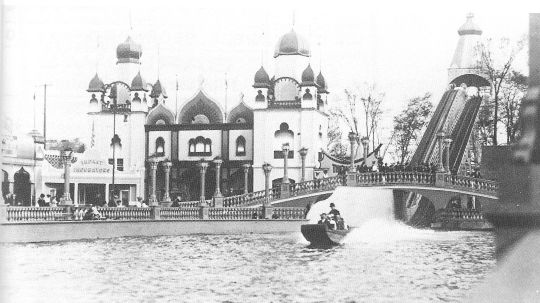
At the far end of the lagoon was a bridge spanning the Chutes ramp and a large elaborately decorated concert shell. To the left of the lagoon is where you loaded/exited from the Chutes, and to the right were benches where people could sit and listen to band concerts.
In the picture below, the large Moorish styled building at the edge of the plaza is a ballroom called the Casino. On the upper floor was located the Roof Garden restaurant. Luna Park became so popular that the dance hall became too small to host the crowds.
Just to the left of the Casino, is the Scenic River. This was an "old mill" (tunnel of love) ride that lasted intact throughout the entire life of the park (although at the very end the entrance building was re-designed and the ride renamed the Mystic Caverns). The station featured a real working waterwheel (the wheel was mounted to the wall that separated the ride station from Luna’s carpentry shop in the rear of the building). Buildings along the course of the ride housed elaborate dioramas.

Walking past the Scenic River we encounter the Figure Eight. This held the record as the world’s largest figure eight styled side-friction roller coaster (which isn’t saying much, as Lakemont Parks Leap-the-Dips wasn’t much smaller).
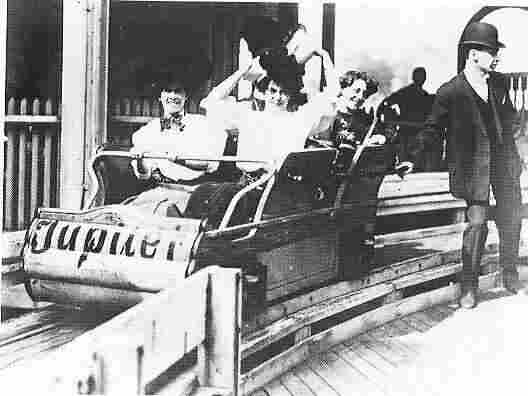
The picture below was taken from end of the lagoon, looking towards the midway and the front of the park. You can see the railings of the lagoon bridge in the foreground. The plaza is on the left, with the Japanese Exposition just behind it.
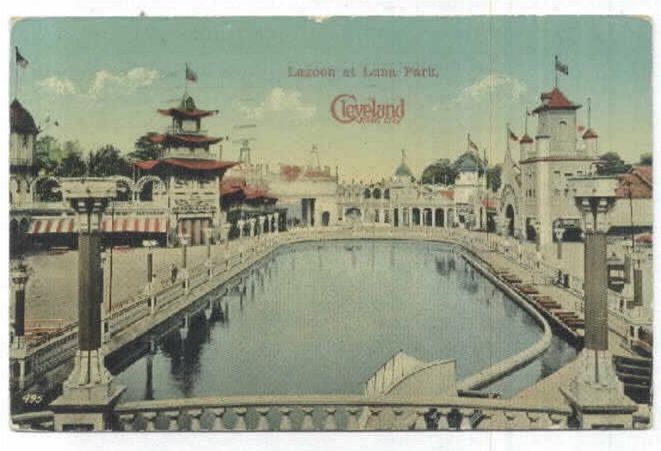
The picture below provides a view of the plaza, with the circus ring in the foreground. The Bandshell is behind the lagoon bridge. Between the Chutes ramp and the complementary twin towered building were located the park's main toilets. Inside the left tower was the small Art Parlor (initially featuring a risqué "girlie" show called the "Parisian Diorama").
The center building, covered in an elaborate mural, was the Night and Morning theater. The right tower featured a Hot Waffle shop (the waffles were similar to what would eventually be called "Belgian" waffles).
Moving along to the right you encounter a building designed to look like the deck of a sailing ship being flanked by two light houses. This was a once popular motion simulator ride (yes… motion simulators at the turn of the last century) called A Trip to Rockaway", in which you took a simulated ocean voyage that encountered mechanically produced storms and rolling seas.
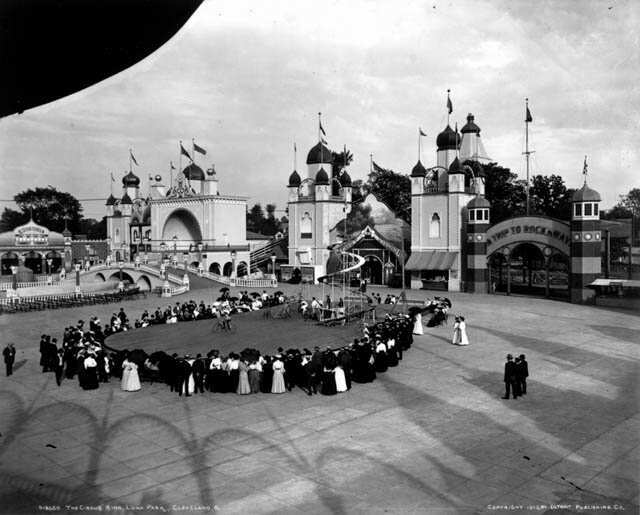
In the picture below, on the right behind the circus ring was a Pagoda shaped tower marking the end of the Japanese Exposition. Inside was a day nursery for use by mothers who had to bring small children with them to the park. It included a staff of children’s maids and a baby carriage livery.
On the left is The Casino ballroom. In between these two large buildings is a shop that sold Mineral Waters, Italian Ices, and other refreshments.
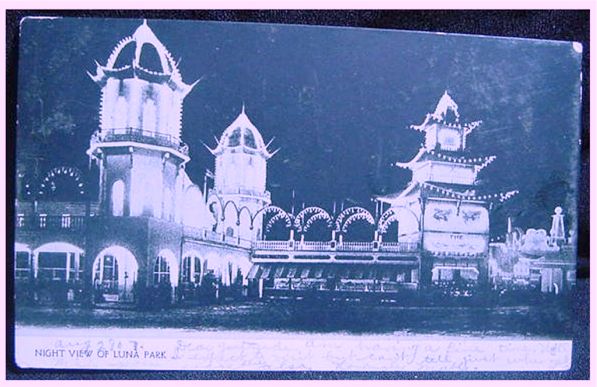
Luna was intended as an adult park (the park sold beer and cigars), but the management did everything possible to help keep children occupied while their parents enjoyed the parks more mature offerings.
At the back of the park is the picnic ground. At the very end, in the picture below, we can see the Picnic Pavilion.
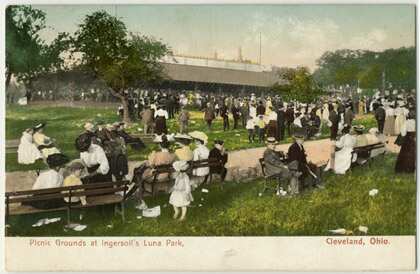
[TRIVIA: Entertainer Bob Hope spent much of his youth at Luna Park. He would often sneak into company picnics and try to win prizes in events such as sack races]. At the far corner, under the piers that held up the Sheiks Tent-like building at the crest of the Chutes ramp, was Luna’s storage warehouse.